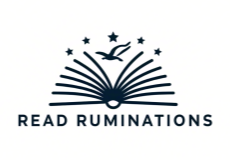Introduction
Richard Wright’s Native Son, first published in 1940, remains a landmark in American literature and a crucial exploration of systemic racism. As the first best-selling novel by an African American author, the story of Bigger Thomas not only exposed the brutal realities of racial injustice but also forced a predominantly white readership to confront the psychological consequences of oppression. Through a gripping narrative, Wright dissected the institutionalized racism that defined the early 20th-century urban experience for African Americans, offering a portrait of a society rife with inequality. This article offers a comprehensive analysis of Native Son, examining its historical context, character complexity, thematic concerns, educational significance, and enduring cultural legacy.
Chapter 1: Richard Wright — A Literary Revolutionary

Richard Wright’s personal history is inextricable from the stories he wrote. Born in 1908 in Mississippi, Wright’s early life was shaped by deep poverty and systemic racial discrimination. These hardships, endured in the segregated South, informed the perspective that would later influence his most powerful works. After moving to Chicago during the Great Migration, Wright joined the John Reed Club, an organization affiliated with the Communist Party, where he further developed his interest in addressing social injustices through literature.
Wright’s 1938 publication of Uncle Tom’s Children marked the beginning of his national recognition, but it was Native Son that established him as a literary giant. With this novel, Wright not only told a gripping story but also presented a piercing social commentary on America’s racial divide. His unapologetic realism and emotionally charged prose became defining traits of his literary style. These elements continue to influence writers today, including James Baldwin, Ralph Ellison, and Toni Morrison.
Chapter 2: The Historical Context of Native Son
To understand the significance of Native Son, it is essential to situate it within the historical moment of its creation. The novel was released during a time when the United States was still reeling from the Great Depression, and Jim Crow laws continued to oppress African Americans, particularly in the South. As Black families migrated to cities like Chicago in search of better opportunities, they encountered new forms of discrimination — overcrowded housing, limited employment, and rampant segregation.
Chicago’s South Side, where Bigger Thomas lives, symbolizes the confined world African Americans inhabited. Segregated neighborhoods and underfunded schools were not just backdrops but direct contributors to the development of Bigger’s identity. Wright uses this setting to highlight the systemic barriers that limit African American advancement, turning environmental oppression into a major character in the novel.
The novel also coincided with the early stages of the Civil Rights Movement, giving voice to the frustrations of African Americans who were beginning to demand social and political equality more vocally. Wright’s fearless engagement with these themes challenged both white and Black readers to confront uncomfortable truths.
Chapter 3: Systemic Racism in Native Son
One of the most pervasive themes in Native Son is systemic racism — the structural inequality built into every aspect of American life. Bigger Thomas is not a one-dimensional criminal; he is a young Black man born into a society that has predetermined the limits of his existence. His housing, education, job opportunities, and even his sense of self are all shaped by the racist institutions surrounding him.
Wright exposes the false benevolence of liberal white characters like the Daltons, who pride themselves on charitable acts but fail to understand or address the deeper systemic issues affecting people like Bigger. Their charity becomes a form of control, highlighting how even well-intentioned efforts can contribute to racial inequality when divorced from genuine understanding and systemic reform.
Bigger’s fear, anger, and ultimate violence are portrayed as logical, though tragic, consequences of his environment. Wright doesn’t excuse Bigger’s actions, but he does explain them, framing them as the result of a system that leaves Black men few options and strips them of hope.
Chapter 4: The Psychological Impact of Oppression
Wright delves deeply into the psychological ramifications of systemic racism. Bigger is constantly aware of how he is perceived by white society — as a threat, a stereotype, a criminal in waiting. This awareness manifests as internalized fear and aggression, often resulting in destructive choices.
The most pivotal moment of the novel — the accidental murder of Mary Dalton — is not merely an act of violence but a representation of Bigger’s panic, powerlessness, and societal conditioning. Wright uses this incident to highlight how fear rooted in systemic racism can lead to devastating consequences.
Bigger’s internal conflict — between his desire to assert control over his life and the societal forces that constrain him — paints a compelling psychological portrait. His growing awareness of his condition becomes a central element of the novel’s tragic trajectory.
Chapter 5: Bigger Thomas as a Flawed and Complex Protagonist
Bigger Thomas is one of the most controversial figures in American literature. His actions—bullying, violence, and eventual murder—make him difficult to sympathize with. Yet, Wright imbues him with a depth that challenges readers to consider the roots of his behavior.
Bigger is not just a symbol of systemic failure; he is also a deeply human character struggling against immense psychological and social pressure. His lack of positive influences, exposure to violence, and constant societal surveillance create a toxic environment in which healthy identity formation is nearly impossible.
Wright challenges readers to look beyond morality and question the conditions that breed such desperation. In doing so, Bigger becomes a tragic hero of sorts — not because he is noble, but because he is painfully real.
Chapter 6: Literary Style and Narrative Techniques

Richard Wright employs a blend of realism, naturalism, and psychological exploration in Native Son. The narrative is divided into three parts — “Fear,” “Flight,” and “Fate” — each representing a stage in Bigger’s psychological unraveling.
Wright’s use of language is raw and unfiltered, a stylistic choice that matches the urgency and gravity of his themes. The novel’s third-person limited point of view allows readers to experience Bigger’s thoughts, offering insights into his motivations, fears, and growing awareness.
The symbolism throughout the novel — from the oppressive walls of the Thomas family’s one-room apartment to the snowstorm that mirrors Bigger’s descent into chaos — reinforces the themes of confinement and inevitability. Wright’s control over mood and tone amplifies the emotional impact of the story.
Chapter 7: Cultural Impact and Literary Legacy
The publication of Native Son was a watershed moment in American literature. It marked the first time a mainstream American audience encountered an unflinching portrayal of a young Black man shaped and ultimately destroyed by racism. Wright’s success opened doors for future African American writers and helped elevate Black voices in literary circles.
The novel’s influence extends beyond literature. It has inspired stage adaptations, films — most recently the 2019 HBO version — and critical essays. Authors like James Baldwin, Gwendolyn Brooks, and Toni Morrison have all acknowledged Wright’s impact, even as they sometimes challenged his methods.
In academic settings, Native Son continues to be a staple in courses on American literature, African American studies, and social justice. Its themes resonate with contemporary movements like Black Lives Matter, making it a vital resource for understanding the historical roots of present-day racial dynamics.
Chapter 8: Educational Significance and Pedagogical Challenges
Integrating Native Son into modern curricula requires careful navigation. Its graphic content, controversial themes, and complex protagonist can provoke discomfort — a fact that has led to attempts at censorship in some school districts. Yet this very discomfort is what makes the novel an essential educational tool.
Teaching Native Son offers students a way to engage with difficult but necessary conversations about race, identity, and justice. However, educators must provide historical context and emotional support to help students process the novel’s content. Study guides, structured discussions, and comparative texts — such as Ta-Nehisi Coates’ Between the World and Me — can enrich the learning experience.
Chapter 9: Contemporary Relevance
Despite being published over eight decades ago, Native Son remains acutely relevant. The themes of police violence, media bias, economic disenfranchisement, and systemic injustice echo in contemporary society. Bigger Thomas’s story could easily be a headline in today’s news cycle.
The novel continues to inspire contemporary artists and writers to explore themes of racial identity and oppression. Modern adaptations and reinterpretations, such as Nambi E. Kelley’s stage version and recent film versions, bring Wright’s message to new generations.
Moreover, Native Son invites reflection on broader philosophical questions: What does it mean to be free in a society that defines you by your race? How does one assert individuality within systems designed to suppress it? In asking these questions, Wright’s work remains a critical entry point into the discourse on racial justice.
Conclusion: A Novel for Then and Now
Native Son is more than a novel; it is a sociopolitical document, a psychological exploration, and a call to action. Richard Wright’s creation of Bigger Thomas forces readers to confront the devastating effects of racism not as an abstract evil, but as a lived experience with real consequences.
By shedding light on the systemic forces that shape behavior and identity, Wright challenges us to reexamine our societal structures. The legacy of Native Son is not just literary—it is cultural, educational, and deeply human. As long as the struggle for justice and equality persists, Native Son will remain a vital, urgent voice in that conversation.
Reading Native Son is not just about understanding the past—it’s about engaging with the present and imagining a better future. In doing so, we honor Wright’s vision and affirm the importance of literature as a vehicle for truth, empathy, and transformation.



